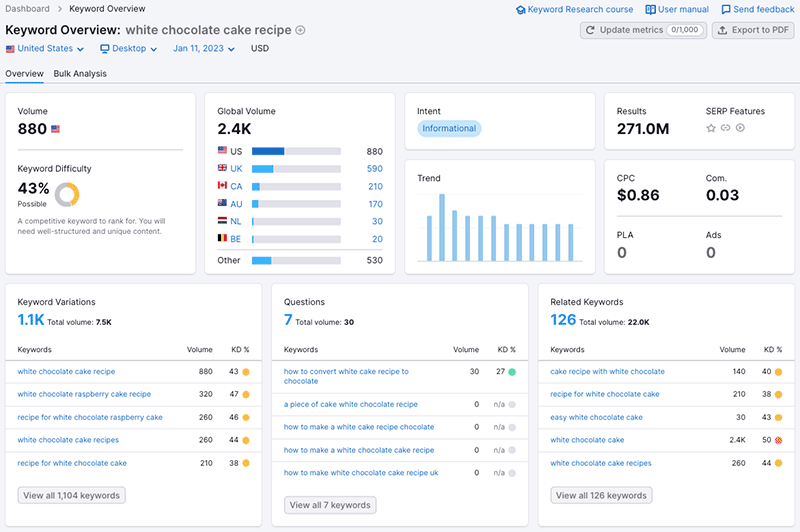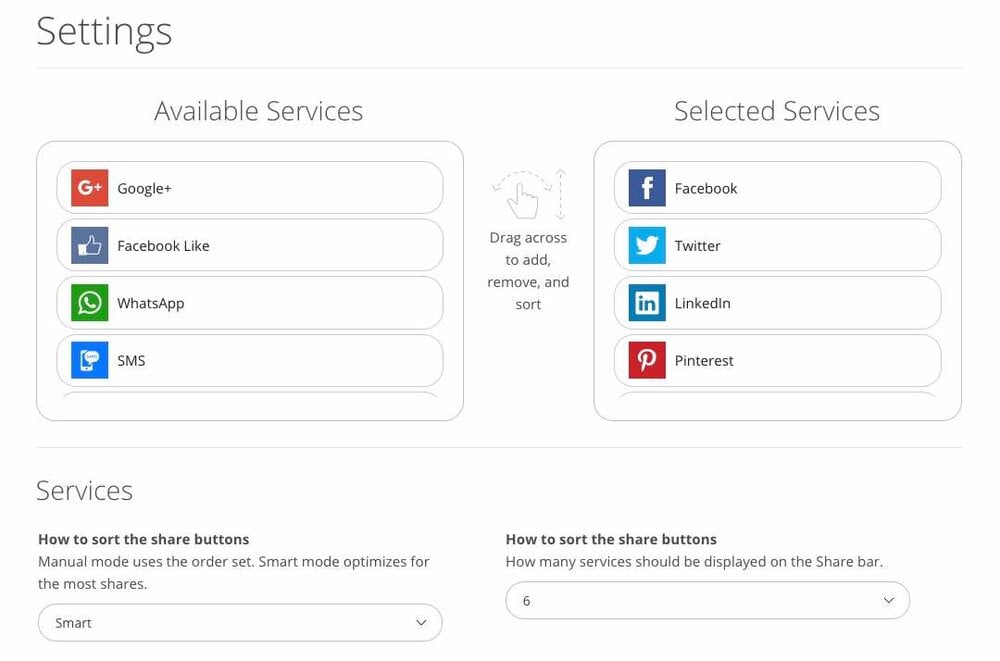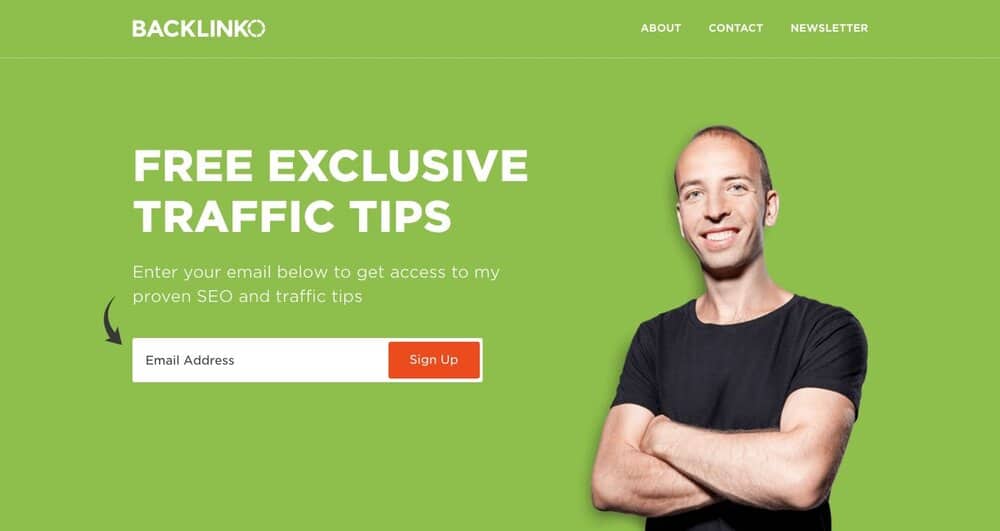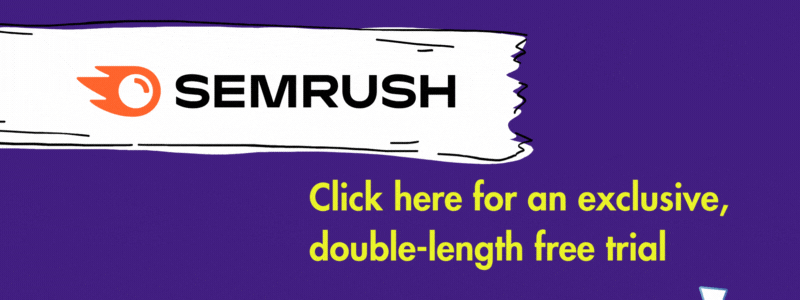
With its promise of potential customers coming to you rather than you having to go out and grab their attention, it’s no surprise that many business owners are interested in inbound marketing. But what is inbound marketing, and how can you make the most of it?
Let’s find out.
A definition of inbound marketing

Inbound marketing is a way to ‘pull’ people to your business by creating engaging, highly shareable content — rather than relying on advertising spend or public relations (PR) to ‘push’ potential customers towards it.
A key advantage of an inbound marketing approach is that unlike traditional outbound marketing, it doesn’t necessarily involve a large advertising spend.
Content creation can be done fairly cheaply — or, if you’re creating it yourself, for free — and it can be remarkably effective in providing a new business with an audience, leads, and ultimately sales.
Remember however that although inbound marketing campaigns might not always require a lot of capital to start, they can nonetheless be resource intensive.
It takes a lot of time and effort to create the kind of strong content needed for a successful inbound marketing strategy.
And, as you scale things up, costs will inevitably creep up — you may find yourself needing more writers and editors, along with better technology for creating or hosting your content.
But done right, inbound marketing works great and you can technically start doing it without any cash.
So, let’s look at the key steps involved in creating a successful inbound marketing campaign — starting with keyword research.
1. Start with keyword research

The first step to creating an effective inbound marketing strategy involves keyword research.
In simple terms, this just means identifying topics to write about that are likely to generate organic traffic — and the right sort of it.
For obvious reasons, these need to be related to your business area and your target audience.
For example, there is no point in blogging about hats for swimmers if your goal is really to sell iMacs to entrepreneurs. The content you’re creating needs to align with your buyer personas.
Generally speaking, in order for your inbound marketing strategy to work, you need to ensure that:
a reasonably large number of people are actually searching for the sort of content you want to publish
the search results are not already absolutely full of articles on well-known sites that cover exactly the same topic.
In other words, you usually need to find a ‘content niche’ — a sweet spot in search results where there is demand for the sort of thing you want to publish, without there being a huge number of articles (particularly on popular websites) that already cover that ground.
To find this niche, and create the most relevant content for your audience, you’ll need to make use of a keyword research tool.

There are quite a lot of these on the market, but the big hitters are probably Semrush, Ahrefs and Moz.
Tip: check out our Ahrefs vs Semrush comparision, our Ahrefs review, our Moz vs Ahrefs guide, our Moz vs Semrush comparison and our Semrush review to find out which keyword research tool is right for you.
You can use keyword research tools to find out two key pieces of information that will help you find your niche, which are:
- how many searches per month there are for a particular phrase.
- how difficult it will be to rank for it.
Let’s consider an example.
Imagine that you have made an iPhone app for runners and want to sell it to people with an interest in staying fit.
You enter a few phrases into your keyword research tool to see which ones would make potentially good blog post titles.
You quickly find out that there would be little point in publishing articles called ‘iPhone’ or ‘iPhone apps’, because although there are huge volumes of searches for these phrases, the search results are absolutely dominated by pages from the Apple website — and you are very unlikely to outgun Apple in search results!
However, you might also establish that there is a potential gap in search results for phrases such as ‘free running app for iPhone’ or ‘best iOs apps for runners.’
The trick is to find phrases that generate a reasonable number of searches from people who are most likely to be interested in your business — but which are also possible to rank for in search results.
(The video below shows you how you can do simple keyword research using Semrush.)
Video guide: how to perform keyword research with Semrush
For a limited time, you can access a double-length free trial of Semrush here.
2. Create amazing content

Once you’ve found your niche, it’s time to create some fabulous content that will really draw people — and search engines — in.
Generally speaking, ‘long form content,’ in the form of detailed blog posts that cover a topic in depth, is the best type to create.
There are quite a few reasons why long-form blog content is a good starting point for generating traffic, but three important ones are as follows:
- It’s keyword rich, something that search engines tend to like.
- It’s in-depth, something that readers like — because it answers their query in full (and also makes them more likely to share it).
- It has the potential to increase a user’s ‘dwell time‘ on a page (something that search engines may reward with higher rankings).
Another advantage of starting an inbound marketing campaign by writing detailed blog posts is that the activity doesn’t involve much in the way of equipment or investment. Unlike, say, making videos — which will potentially require things like expensive cameras, lighting, voiceover artists etc. — all you need to start blogging is a keyboard and a computer.
Now, the key thing about any content you create for an inbound marketing campaign is that it has to be absolutely amazing — regardless of its format.
‘Amazing’ can mean informative, touching, or hilarious — but the main thing is that it has to be something that will really satisfy your users and make them want to share it.
And speaking of sharing…
3. Encourage content sharing

Inbound marketing campaigns work best when your site visitors share the content that you have produced for them.
There are two types of ‘shares’ you need to achieve for your content:
- Social shares — tweets, inclusion of your content in Facebook posts, LinkedIn shares etc.
- Backlink creation — when somebody creates an external link to your content on their site.
Social shares
As you might expect, social shares generate traffic to your content by increasing its visibility in social media feeds and driving clickthroughs. They are vital to the success of any content marketing strategy.
Accordingly, it’s a good idea to:
- add social sharing icons to your site
- make them extremely prominent
- actively encourage social sharing in the copy of your articles.
Basically, you want your site visitors to conduct a social media marketing campaign on your behalf — and the easier it is for your audience to share your content on social networks, the more likely it is that you’ll achieve that goal.
Displaying social proof can also encourage people to share your content — if you’ve got a piece of content that a lot of people have shared, it can be beneficial to display the precise number of shares involved.
Not only will the social proof make new site visitors more likely to invest time in reading your content, but it can also nudge people in the direction of sharing it too.

Backlinks
Backlinks — links from other websites to yours — are hugely important for ensuring visibility in search results. Generally speaking, search engines treat them as ‘votes’ for your content: the more of them you have, the better your site’s visibility will be.
Accordingly, the more backlinks you can generate to your content from reputable, ‘high-authority’ websites, the better — not only will they help you from an search engine visibility point of view, but they’ll also drive more traffic to your site when people click on the links themselves.
Now, I recommend being very forthright in asking readers to create a backlink to your site from theirs.
Though not all your readers will have their own site or blog, a certain proportion will, and you’ll get valuable ‘link juice’ if enough of them oblige. So it can’t hurt to include a ‘please link to this’ call-to-action in your content!
In most cases you’ll also need to engage in backlink building in general. This involves reaching out to bloggers and webmasters with the view of getting links to your content from theirs.
Tip: it’s best to avoid buying links or excessively swapping links. Both these activities are against Google’s webmaster guidelines.
Increasing site visibility: a video guide
4. Turn your site visitors into leads

Once you’ve got visitors to your site, you need to convert them to leads.
In many cases the best sort of lead is an email subscriber — not a social media follower.
While it’s undeniably useful to gain social media followers as a result of people consuming your content, capturing an email address is arguably the most effective sort of lead generation, for two main reasons:
Email has an amazing ROI (in fact, according to Campaign Monitor, it actually generates the highest ROI for marketers, full stop).
You are in control of the relationship with your subscribers and can contact them directly via email; in other words, you won’t have to worry about a social media algorithm hiding your content from your followers.
Now, in order to capture email addresses, you’ll need to use an email marketing tool and embed newsletter sign-up forms prominently on your site.
This typically means ensuring that:
- sign-up forms are prominently embedded in the content of your site
- there is a clear subscribe option in your navigation
- there is a sign-up form beside or in each blog post
- your footer contains a sign-up button which allows people to join your list.
In essence, you want to make it incredibly easy for people to sign up to your email list.

What’s more, you want to make the prospect of joining your list extremely appealing.
In other words, don’t use a boring old ‘join our mailing list’ call to action — spell out all the great stuff that the subscriber is going to receive when he or she joins your mailing list (see the image above for an example of search engine optimization expert Brian Dean doing exactly that).
Once you’ve captured a visitor’s email address, it’s tempting to view this as an opportunity to immediately start trying to sell your products and services to that subscriber.
And, while it’s obviously very important to promote your products via your mailing list, if you are serious about inbound marketing you should be equally focused on using your list to promote your content — valuable blog posts, videos, etc. that your subscriber may find interesting (and even better, useful).
This is because the more subscribers who encounter your most valuable content via your e-newsletters, the more clickthroughs you’ll get to it, which in turn can lead to more social shares and backlinks for your content (and — happy days — more traffic).
Now, you can promote your content really easily — and automatically — by using a marketing automation platform (for example GetResponse or AWeber).
These let you send autoresponders — automated e-newsletters sent by your email marketing tool at intervals of your choosing — and create customer journeys that promote your content automatically.
Video guide: what is an autoresponder?
Obviously encourage your subscribers to share this content on social media or create backlinks to it when you do so!
Don’t miss out on our free SEO toolkit
For a limited time only we’re offering our readers some excellent free SEO tools and resources. Sign up now to immediately receive:
- our downloadable cheatsheet containing the 20 key steps to ranking highly in search results
- extended free trials and discounts for leading SEO tools
- our downloadable cheatsheet on how to grow organic traffic to a blog
- 2 in-depth guides to SEO
- ongoing free tips and advice on SEO and growing your business
5. Create a sales funnel

To get the very most out of inbound marketing, you need to have a clear idea about what you want to do with the leads you’ve captured from your content-creation efforts.
A clearly defined sequence in the form of a sales funnel will help you out here.
A sales funnel (also known as a ‘conversion funnel‘) is essentially a set of pre-defined steps that each lead is taken through once they have subscribed to your mailing list or used your contact form.
The nature of your sales funnel will depend very much on the type of business you’re running, but the aim is to design a subscriber journey that efficiently converts your lead from being a ‘cold’ lead into a fully-fledged customer (and perhaps even a passionate ambassador for your brand).
Ideally, this conversion process should be as personalized as possible. Use data segmentation along with email copy and phone call scripts that let your sales team deliver the most relevant, targeted information about your products and services to your leads.
Again, autoresponders can help here, as can CRM tools — particularly those that facilitate sophisticated workflows that look at user data and how your subscribers interact with your e-newsletters to provide a highly customized, automated series of communications.
What tools do I need for inbound marketing?
Inbound marketing typically relies on a mix of different tools / software. Typically you’ll need a blog, a keyword research tool, a CRM solution, an email marketing app and social media profiles.
If you’re looking for a solution that gives you all of these ‘under one roof,’ it’s questionable whether this truly exists — but that said, there are products out there which do aim to give you a lot of inbound marketing tools all in one place. Of these, Hubspot is probably the best known.
6. Analyze, optimize and repeat!

When you’ve got a successful inbound marketing process up and running, don’t think you can leave it at that!
Your next job is to analyze what’s working and what’s not, then optimize the process accordingly — and repeat!
Use all the data from your keyword research tools, website analytics, email marketing and social media profiles to find out what content really works best for you — and what sort of content you should be creating in the future.
Similarly, keep an eye on your sales funnel, autoresponders, customer acquisition stats and CRM tools to see what’s working well in terms of generating prospects and clients — and how you can streamline and improve this process as you grow your business.
Inbound marketing cheatsheet
These inbound marketing tactics are key to creating a successful inbound marketing campaign:
- Use keyword research tools to ensure that your content is going to be focussed on searches that people are actually making — and ones that you can rank for.
- Blog regularly. Not only will this make your site more keyword rich, it will help it be taken more seriously by Google’s search algorithms (which factor in frequency of updates when determining where to place your site in search results).
- Ensure any content you publish is high quality. Don’t pack your site full of keyword-rich but ultimately useless copy – it won’t impress anyone (Google included).
- Create backlinks where possible. Ask clients, colleagues and friends who run relevant websites or blogs to provide you with a backlink and reach out to popular bloggers in your business niche too. Avoid spammy link building services though, as they can damage your position in search results.
- Get on Google’s radar by registering with Google Search Console and read up on what Google actually recommends you do from an SEO perspective.
- Use social sharing icons to make it easy for people to share your content. Sumo or Addthis can help with this.
- Make it easy for people who visit your site to sign up to your mailing list (and encourage them to do so by offering interesting content/features/tools in exchange for their details).
- Create a sales funnel that builds customer relationships and converts leads to clients.
- Analyze your statistics regularly to see which pieces of content are driving the most traffic to your site, and adjust / refine your content strategy based on this information.
Inbound marketing FAQ
What is inbound marketing?
Inbund marketing is a way to ‘pull’ people to your business through the creation of engaging content that 1) ranks highly in search results and 2) is shared widely by those who encounter it. It differs from traditional marketing in that it can be carried out (initially at least) very cheaply or even for free.
What tools do I need to carry out an inbound marketing campaign?
To carry out inbound marketing effectively you will need a keyword research tool (like Ahrefs or Semrush), a blogging platform, social media presences and an email marketing app.
What’s the main difference between inbound and outbound marketing?
While outbound marketing typically relies on a high advertising spend that ‘pushes’ people to your business, inbound marketing is more about search engine optimization and creating content that ‘pulls’ people towards it.
How do I get my content ranked highly by Google?
In order to rank highly for a phrase on Google search results you will need to ensure that you have carried out keyword research (to ensure it’s actually possible to rank for that phrase); registered your website with Google Search Console; created really strong content; and built high-quality links to it.
Related inbound marketing resources
We have quite a lot of reviews of keyword research tools available — check out our in-depth Semrush review, our Semrush pricing guide, our Moz vs Ahrefs guide, our SpyFu vs Semrush comparison and our Ahrefs vs Semrush comparison to learn more about some of the things you can do to drive inbound traffic with a dedicated search engine optimization tool.
You might find our post on how to increase blog traffic helpful, or you can check out our video guide to blogging effectively. Both highlight simple ways that you can get more readers for your blog content — a key part of a successful inbound marketing campaign.
- Our YouTube tutorial on how to grow an email list gives you 10 key tips on how to increase your email subscriber count, fast.
- Our guide to making a site more visible on Google contains some general tips on how to lay out your content in a way that will help it rank in search.
- For more general tips on how to create a successful business, check out our ‘how to start a business’ checklist. Our A-Z ecommerce glossary may also be of help here.
Got any thoughts or questions on inbound marketing?
If you’ve got any questions on how inbound marketing works, or if you’ve run inbound marketing campaigns in the past, do feel free to leave your observations, queries and tip in the comments section below. We read them all and do our best to answer any questions. Good luck with your inbound marketing efforts!

Comments (5)
Yet another amazing one Chris, you went right off the bat. I always look out for your new posts on Twitter because they are helpful to me as a marketeer.
Many thanks for the kind words, Ken! Glad you found the content helpful.
Hi Chris!
I am a junior marketeer (if such thing exists) so I find your blog in general and this article in particular very interesting. Thank you for great job.
However, I am also bothered how little engagement in terms of likes and shares this article got. And this in a course of few years now.I would try to make SM buttons more obvious and shiny as I have not paid much attention to them at first meself, or place them right under the article and then you Email Sign-up form.
Thank you!
Cheers for your comments Max – some fair points there. I suspect you were looking at the post on a mobile device, as there are some prominent share buttons on the desktop version. But duly noted! Will tweak in due course. Hope you found the inbound marketing article useful in any event 🙂
Thanks Chris. Another excellent, clearly presented blog.